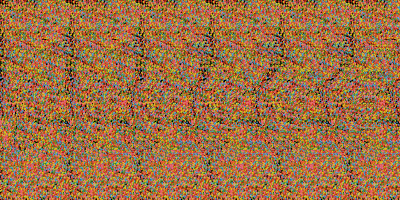
When a series of autostereograms are shown one after another, in the same way moving pictures are shown, the brain perceives an animated autostereogram. If all autostereograms in the animation are produced using the same background pattern, it is often possible to see faint outlines of parts of the moving 3D object in the 2D autostereogram image without wall-eyed viewing; the constantly shifting pixels of the moving object can be clearly distinguished from the static background plane. To eliminate this side effect, animated autostereograms often use shifting background in order to disguise the moving parts.
Source: http://en.wikipedia.org/wiki/Autostereogram





No comments:
Post a Comment